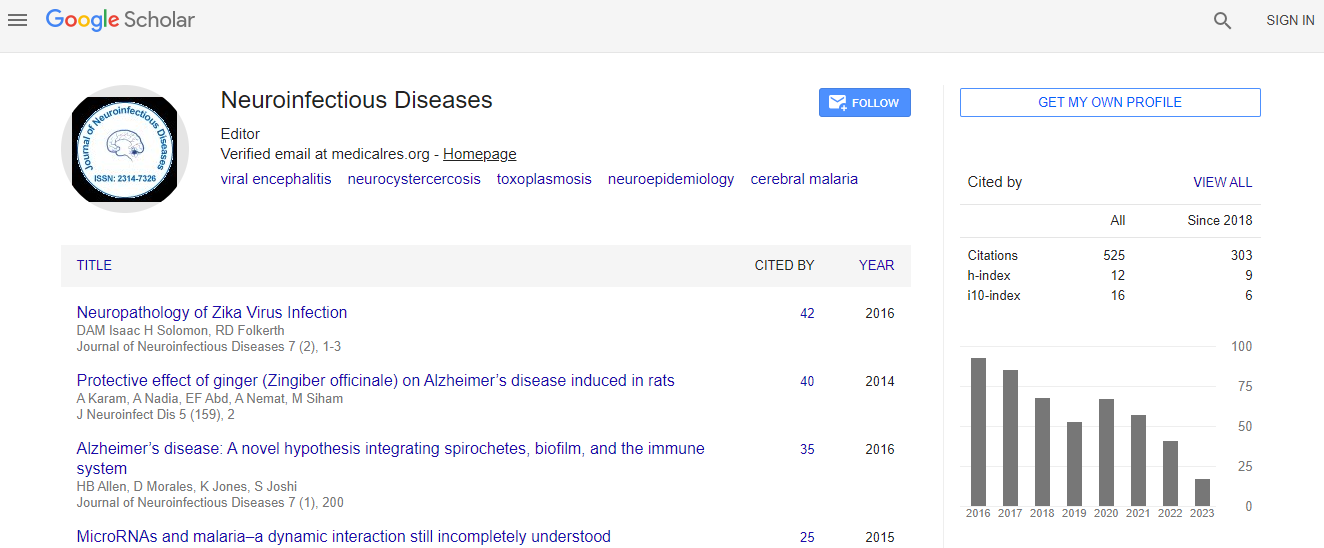Research Article
Treatment Approach to Infant with Sepsis and Neurological Complications Resulting in Multicystic Encephalomalacia
Mirla Fiuza Diniz*, Rayanna Mara De-Oliveira Santos Pereira and Leonardo Brandão Barreto
Escola de Medicina – Universidade Federal de Ouro Preto, Brazil
- *Corresponding Author:
- Mirla Fiuza Diniz
Escola de Medicina – Universidade
Federal de Ouro Preto, Brazil
Tel: 55 31 3559-1189
E-mail: mirladiniz_13@hotmail.com
Received date: July 24, 2017; Accepted date: August 08, 2017; Published date: August 10, 2017
Citation: Diniz MF, Santos Pereira RMD, Barreto LD (2017) Treatment Approach to Infant with Sepsis and Neurological Complications Resulting in Multicystic Encephalomalacia. J Neuroinfect Dis 8:260. doi:10.4172/2314-7326.1000260
Copyright: © 2017 Diniz MF, et al. This is an open-access article distributed under the terms of the creative commons attribution license, which permits unrestricted use, distribution, and reproduction in any medium, provided the original author and source are credited.
Abstract
Background: Destructive brain lesions result from aggression to the central nervous system and can be congenital or acquired in the postnatal period. When extensive, these lesions can produce cavitations, as in multicystic encephalomalacia (MCE). The most common etiology of MCE is neonatal hypoxia and ischemia, but there are reports of cases due to viral encephalopathies and head traumas. MCE has a poor prognosis, usually resulting in severe neurological sequelas or death. This article reports a case of multicystic encephalomalacia in the Santa Casa de Misericordia de Ouro Preto-MG (Brazil) contrasting its etiology with those found in the literature as well as discussing the treatment approach to the patient.
Case report: A 10-month-old child, born full-term, hospitalized since birth for treatment of sepsis of pulmonary focus evolved with fungal sepsis and supratentorial hydrocephaly leading to the implantation of a ventricular shunt. As the patient developed ventriculitis, the catheter was removed. Polymyxin B was administered intrathecally and lumbar punctures were performed to relieve the hydrocephaly. The patient maintained the alterations in the liquor exam, despite the prolonged antibiotics therapy and had multiple cystic lesions, intra and extra-ventricular, with a compressive aspect, and residual brain parenchyma on the CT, characterizing MCE. The patient passed away after a few weeks of further care and no improvement on overall status.
Discussion: MCE results from a brain lesion at the end of pregnancy, during birth or in the perinatal period, and it leads to the formation of poorly defined cavities with glial reaction creating septa. The etiologies presented by the patient of fungal and bacterial infection weren't common in the literature.
Conclusion: The administration of a larger spectrum antibiotic and the reimplantation of the ventricular shunt could possibly have prevented the progression of the hydrocephaly and the evolution of the case to MCE.

 Spanish
Spanish  Chinese
Chinese  Russian
Russian  German
German  French
French  Japanese
Japanese  Portuguese
Portuguese  Hindi
Hindi 
